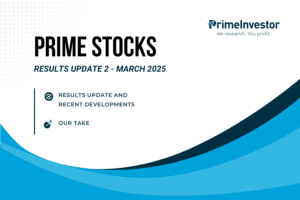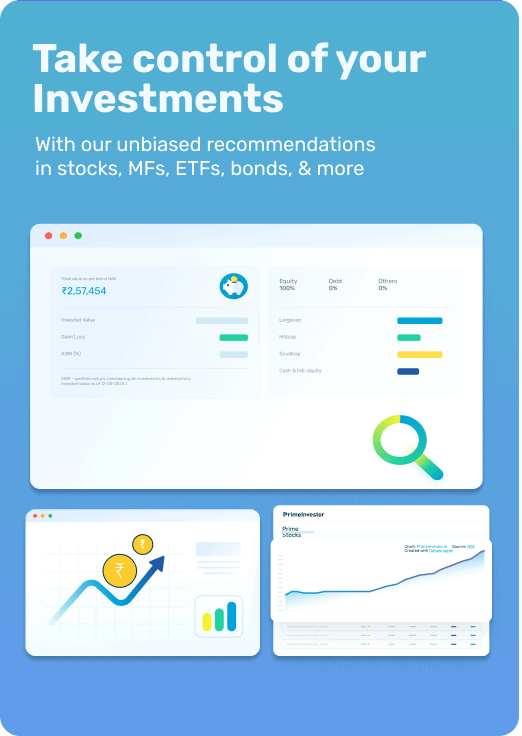As a part of PrimeInvestor’s bond recommendations, we’ve been highlighting attractive investment opportunities in government securities (g-secs) in recent months. We actively track primary auctions of government bonds on the RBI Retail Direct platform to give you these calls. (Read this article on how to buy G-Secs)
But the popular view among the Indian investment and advisory is that there’s no need for retail investors to dabble directly in g-secs, when there are institutions like banks, mutual funds or insurance companies to do it for them.
Well, we don’t agree. In some situations, investing directly in g-secs or SDLs is a lucrative option for the retail investor. We highlight below three specific use-cases where investing in gilt auctions works extremely well for the investor and scores over other options.

Long-term income: Better than annuity/pension products
Most employees in India are no longer eligible for a cushy pension from their employer once they retire. Retirees or those on the verge of retirement, therefore tend to scrounge for investment products that help them lock into a guaranteed income for 20-30 years or lifelong if possible. They would also like products that allow them to set up a lifelong income for their spouse or family after their passing.
To secure their pension, many retirees end up investing in immediate or deferred annuity plans from insurers. But they offer poor returns, have unfriendly features and are tax inefficient to boot. Immediate annuity plans from insurers, which can be bought on the eve of retirement, start paying a fixed pension soon after you make an upfront investment. Deferred annuity plans, which can be bought 5 or 10 years ahead of retirement, pay out regular income a few years after you make your initial investment.
Direct investments in g-secs score over immediate and deferred annuity plans offered by insurers on three counts- returns, taxation and flexibility to participate in a rising rate cycle.
#1 Returns
Most immediate annuity plans from insurers, which offer you lifelong income in return for an upfront lumpsum investments offer effective IRRs of 5-5.5% at the most. LIC’s Jeevan Akshay VII, a popular plan, offers you a lifelong annual income of Rs 53,950 for an upfront investment of Rs 10 lakh plus GST (Rs 1018000) at age 60. (This is with the return of your purchase price to your nominees.)
The effective IRR on this plan works out to about 5% for a person who lives until 90. Compare this to the most recent tranche of central g-secs auctioned on the RBI RDG platform. G-secs maturing in 2051 (29-year maturity) auctioned last week carried an indicative yield of 7.69%. In effect, a retiree who invested Rs 10 lakh in this bond would be entitled to receive Rs 76,900 in annual interest for the next 30 years. That’s 42% higher income than the amount you’re getting from LIC’s immediate annuity plan, that too from a sovereign instrument. The effective IRR on the g-sec at the end of 30 years works out to about 7%.
If a 7.69% yield from a central g-sec for 30 years appears very attractive, do take note that many SDLs in recent times have offered even better yields of 8% plus on 30-year instruments (See table below). You can add in a small exposure to SDLs from larger States to set up a solid income stream post retirement. Yes, the 30-year government bond can be illiquid and you may not be able to exit it prematurely should you need the money. But then surrender terms of immediate annuity plans are also equally unfriendly, effectively denying you of liquidity.
#2 Taxation
G-sec investments can work out to be more efficient than annuity and pension plans on taxation too. Your upfront investment in an annuity plan is subject to GST while the investment in g-secs is not subject to any such levy. What’s more, the interest alone you receive from g-secs is taxed at your income tax slab rate, while the return of principal is not taxed. In the case of an annuity, if you do not opt for return of purchase price, your entire annuity which may consist of both an interest and principal component gets taxed at your slab rate.
In fact, at current levels of gilt yields, investing in the primary auctions of long-dated g-secs are not a bad option for folk in their 50s too who would like to lock into good rates to get a lifelong pension post retirement. For a person investing Rs 10 lakh at age 50 to get a deferred pension ten years later, LIC’s Jeevan Shanti, a deferred annuity plan, offers Rs 91400 a year from age 60.
Investors will have to endure a 10-year wait in the interim where they earn no returns and the effective IRR on this plan works out to 5% if one lives until 90. But the recently auctioned 2051 g-sec offers you a 7% yield without any wait for the returns.
Flexibility: Annuity rates offered by insurers tend to be pretty sticky, not moving up much when market rates rise. In periods where market rates are high, this can mean a raw deal for investors. But g-sec yields are extremely dynamic in responding to rising inflation, macros and RBI’s policy actions. Yes, the investor will need to keep track of movements in market interest rates so that he can bid in RBI auctions when yields are attractive. However, this is not such a tall ask, as any return of 7% plus is pretty good from a long term sovereign instrument.
The dynamic interest rates offered by g-secs and the availability of g-secs with varying tenors (20 year, 25 year, 30 year, 40 year) also allow you to follow a laddering strategy (Read more here https://www.primeinvestor.in/varsity/ladders-barbells-and-roll-downs/) where you can invest lumpsums in several 25, 30 or 40 year g-sec auctions over time, so that you shield yourself from rate risk and build a sizeable regular income portfolio made up exclusively of gilts by the time you retire.
Better than bank FDs
When interest rates in India are tumbling, banks are quick to react and revise their FD rates downwards at frequent intervals. But when rates are rising, banks drag their feet and take their own sweet time to revise their rates upwards. With market interest rates on short term instruments zooming by over a 100 basis points in the past year, banks have as usual been gripped by inertia and have been quite slow to revise their FD rates. This has led to an unusual situation where the yields on government securities for shorter tenors are better than bank deposits.
Given that Central government borrowings are the safest options in the market, this presents an opportunity for fixed income seekers who have been making do with sticky rates on their bank FDs. By opening an RBI RDG account and participating in T Bill auctions, they can not only hope to earn better rates than offered by their bankers but also get to see rates on their investment rise promptly when market rates improve.
Today, for instance FD rates offered by leading banks such as SBI, ICICI Bank and HDFC Bank for 6 month to 2 year tenures vary from 4.4% to 5.7%. However, recent auctions of treasury bills or T-Bills by the government of India offered indicative yields of 5.66% to 6.55% for 6 month to 2 year tenors. Refer to the table below for an idea of yields on recent 6-month, 1 year and 2 year auctions.
T Bills are issued at a discount to their face value and redeemed at par, to ensure that you get the indicated yield. The returns are taxed in the same fashion as bank FDs. While riskier private sector or small finance banks may offer rates nudging 6-7% for short-term FDs, you will need to restrict investments in such cases to Rs 5 lakh per bank (as that’s the deposit insurance limit) in order to diversify your risks. This may mean managing multiple bank accounts, which is cumbersome. With T-bills, even concentrated exposures are quite fine, given the zero risk of default.
Parking windfall profits
We’ve all been in situations where we’ve received a large windfall and would like to take some time to decide where to invest it. Until we make up our minds, we would like the windfall to earn some returns while keeping our capital absolutely safe. This requirement can arise when you receive a large bequest or gift from a parent or relative, a bonus or final settlement from your employer or when you book profits on your portfolio, land or property.
Until now, deposits with banks or certain mutual fund categories such as overnight or liquid funds were your only choices to park such money. However, recent instances of certain private banks running into troubles suggest that it isn’t a great idea to concentrate a very large proportion of your portfolio with a single bank. Yes, systemically large banks like SBI or HDFC Bank may be safe enough, but they tend to offer rock-bottom rates on short-term deposits. Mutual funds that are supposed to be parking grounds for short term money such as liquid funds have suffered their own share of mishaps with some funds taking credit risks in their portfolios and running into liquidity issues.
Treasury bills from the Government of India offer an excellent parking ground for any windfall money that you may have, without any of the above risks. Given that the instrument is sovereign backed you can afford to concentrate fairly large sums in a single security. You can also be certain of the final payment at maturity coming in like clockwork. 14 day and 91-day T-Bills are auctioned off every Friday while 182 day and 364-day T bill auctions usually come up every alternate Wednesday in a month. This allows you to plan for and park your windfalls in this safe instrument without worries.
So if you haven’t opened an RBI RDG account or tracked our g-sec recommendations, the time to start is now.








23 thoughts on “Three use cases where g-secs score”
Can you provide details of upcoming Gsec and SDL in the website on monthly basis which subscribers can access?
Shall consider this suggestion. Thank you
Hi, Thanks for the article.
Could you please shed light on interest payout for g-sec and SDL. I understand it is for every 6 months. Is it at regular intervals of June/ Dec (some thing like fixed dates in a year) or interest payout depends on when we purchase g-sec?
Subbarao
Thanks for the write up, Aarati.
I am a bit confused after reading some discussions here on the safety of SDL vs CG securities. When it is stated that RBI oversees the interest payment/ repayments, where is the risk? Has there ever been a default on interest/ repayments of ANY SDLs ?
An answer to this may help in settling the jitters of retirees like me.
Thanks
There have been no defaults on SDLs. But States unlike the Centre don’t have access to money printing 🙂 and depend on the Centre if they run huge deficits and high debt. Hence the fears. Would recomend a 10-20% allocation to SDLs to improve yoeld
Hi
fantastic Thought Process
Just want to know how this option comparable with Nippon India Nivesh lakshya Fund which also invest in similar maturities and exit option incase of emergency
Thanks
Mutual funds may be more tax efficient and help you compound returns. But they carry fees and returns are dependent on fund manager calls. No such risks with g-secs.
I still dont understand why anybody who pays 20 or 30 percent tax would get into Gsec’s directly. Mutual funds and SWP are far more tax efficient even for monthly income. Only pensioners and those in lower tax brackets should be investing in them.
Well mutual funds are subject to market risks and need timing and selection skills. With gsecs you don’t need either. If you are good at fund selection you can take the MF route. For less than 3 year tenures MFs don’t offer any tax advantage over gsecs.
very helpful. Thank you
How do you compare these with tax free bonds available in the secondary market? one can choose the maturity and the yields (tax free) are 5.6-5.7% and that should be more than comparable, if one takes the highest tax rate and also the killer surcharge that is there for higher incomes (plus the usual education surcharge etc)….also, one risks moving to higher surcharge, if the corpus is higher and remember that moving to the higher surcharge will mean, that the higher tax is applicable for the entire income
Tax free bond yields adjust pretty quickly to gsec yields. But they come for shorter tenors than 30 years etc…which is the use case highlighted here
Thanks for the details, am unable to understand under taxation ” if you do not opt for return of purchase price, your entire annuity which may consist of both an interest and principal component gets taxed at your slab rate” — can you explain in detail ?
In annuity plans, insurers offer an option called lifelong annuity without return of purchase price. In this option all your returns come in the form of monthly payouts, without any principal return at maturity. Pension in such plans is higher. But the entire monthly pension you get is taxed at your slab rate. This will include both return of capital and interest but is treated as income for tax purposes. This is a big minus compared to gilts where only interest gets taxed.
Thanks for the clarity
Great insights Aarti Krishnan,.
Just a query on SDLs. Are these as safe as GOI bonds with sovereign guarantee ? Some states’ finances are in bad shape and does GOI back these SDLs also ? thanks
SDLs are less safe than central govt bonds but repayments are overseen by RBI. If safety is primary concern, better to stick to central gsrcs. If you would like better yields 5% type exposure is good. I included SDLs here bcos better States like TN recently offered 30 year bonds at 8.2%, a mouth watering rate.
Thanks Aarti. Your article is a real eyeopener. I just turned 60 and was looking at various investment products that provide a regular income stream. Your recommendation is a far superior option than any Annuity Option being offered by Life insurance companies
Yes I was hoping retirees can use them.
Comments are closed.